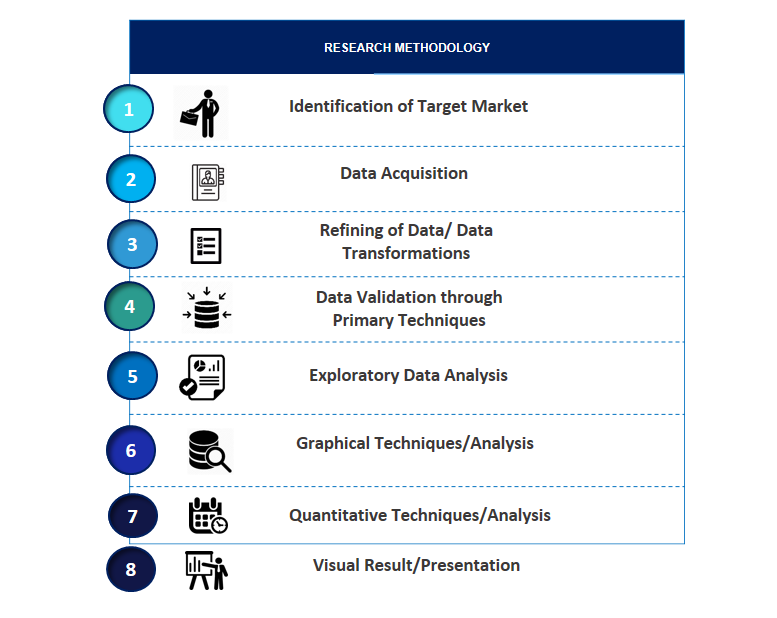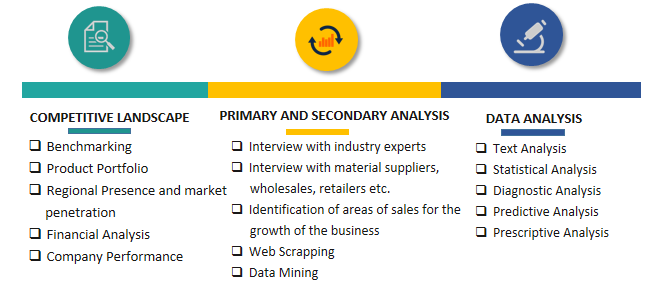Tire Reinforcement Materials Market Introduction and Overview
According to SPER Market Research, the Global Tire Reinforcement Materials Market is estimated to reach USD 25.11 billion by 2033 with a CAGR of 5.19%.
The report includes an in-depth analysis of the Global Tire Reinforcement Materials Market, including market size and trends, product mix, Applications, and supplier analysis. Tire reinforcing materials with excellent durability, stiffness, tensile strength, adherence to rubber, and compression modulus are commonly used. Examples of these materials are beads and fabric cords. Depending on the materials' structure, cost, chemical makeup, and tire plies count, these materials are used. For example, steel cables are used in the radial tires of cars and trucks to increase traction, produce handling force, and improve tire performance overall. In addition, reinforcement materials in the form of beads made with steel wires and additives are employed. To offer protection against load distortion, rim slippage, and fracture during mounting, alloys have been applied to them. Tire reinforcing materials are currently in high demand worldwide because they help keep tires in shape, support the weight of vehicles, and enhance tire functionality.
-005483126022024.webp)
Market Opportunities and Challenges
There are several opportunities in the tire reinforcement materials market, which is driven by a number of important variables. Firstly, the demand for reinforcing materials rises as a result of the automotive industry's continuous evolution and the world's expanding demand for automobiles, which in turn stimulates the need for long-lasting and high-performance tires. The research and use of environmentally friendly materials in tire production is further encouraged by the growing emphasis on sustainability and environmental consciousness, which creates opportunities for creative reinforcing techniques. The development of lighter, stronger, and more affordable reinforcement materials is also made possible by advances in material science and production technology, which meet the changing demands of tire producers.
Although the tire reinforcement materials market has potential, there are significant obstacles that must be carefully navigated by industry participants. One major obstacle is the price volatility of raw materials, especially those sourced from petroleum, which can affect the profitability and expenses of manufacturing. Tight regulations pertaining to safety and environmental sustainability also place a strain on manufacturers to comply with, which means they have to spend money on R&D to keep up with changing requirements. Furthermore, uncertainty is introduced by the global economic environment, which can impact market demand and competitiveness. This includes variations in trade policies and currency exchange rates.
Market Competitive Landscape
The market for tire reinforcing materials is usually almost consolidated. DuPont, Hyosung, SRF Limited, Teijin Ltd., and Toray Hybrid Cord Inc. are a few of the leading companies in the market, not in any particular order.
Scope of the Report:
| Report Metric | Details |
| Market size available for years | 2020-2033 |
| Base year considered | 2023 |
| Forecast period | 2024-2033 |
| Segments covered | By Material, By Technology, By Type, By Application
|
| Regions covered | North America, Asia-Pacific, Latin America, Middle East & Africa and Europe
|
| Companies Covered | Bekaert, Century Enka Limited, CORDENKA GmbH & Co. KG, Dupont, FORMOSA TAFFETA CO. LTD, Glanzstoff Industries, HYOSUNG, Jiangsu Taiji Industry New Materials Co. Ltd, Kolon Industries Inc., Kordsa Teknik Tekstil AÅž, Michelin, SRF Limited, Teijin Ltd, Toray Hybrid Cord Inc., Others.
|
COVID-19 Impact on Global Tire Reinforcement Materials Market
The global epidemic of COVID-19 had a notable effect on the tire reinforcement materials market. Worldwide car production and sales fell as a result of the pandemic's disruption of the automotive sector. The market for reinforcement materials was impacted by this decline, which had a direct effect on tire demand. Production and distribution were delayed as a result of lockdown procedures, supply chain interruptions, and labor shortages that made the issue worse. There was also less of a demand for tires as a result of consumers spending less on non-essential items like cars during the recession. But as economies started to slowly open again and recovery initiatives started, the market started to rise, helped by both government stimulus programs and pent-up demand.
Key Target Audience
- Tire Manufacturers
- Raw Material Suppliers
- Automotive Industry
- Research Institutions and Academia
- Regulatory Bodies
- Investors and Financial Institutions
- Industry Associations and Trade Organizations
Our in-depth analysis of the Tire Reinforcement Materials Market includes the following segments:
|
By Material:
|
Steel
Polyester
Nylon
Rayon
Aramid
Others
|
|
By Technology:
|
Drawing
Melt Spinning
Solution Spinning
|
|
By Type:
|
Tire Cord Fabric
Tire Bead Wire
|
|
By Application:
|
Automobile Carcasses
Belt Ply
Cap Ply
|
Key Topics Covered in the Report
- Global Tire Reinforcement Materials Market Size (FY’2024-FY’2033)
- Overview of Global Tire Reinforcement Materials Market
- Segmentation of Global Tire Reinforcement Materials Market By Material (Steel, Polyester, Nylon, Rayon, Aramid, Others)
- Segmentation of Global Tire Reinforcement Materials Market By Technology (Drawing, Melt Spinning, Solution Spinning)
- Segmentation of Global Tire Reinforcement Materials Market By Type (Tire Cord Fabric, Tire Bead Wire)
- Segmentation of Global Tire Reinforcement Materials Market By Application (Automobile Carcasses, Belt Ply, Cap Ply)
- Statistical Snap of Global Tire Reinforcement Materials Market
- Expansion Analysis of Global Tire Reinforcement Materials Market
- Problems and Obstacles in Global Tire Reinforcement Materials Market
- Competitive Landscape in the Global Tire Reinforcement Materials Market
- Impact of COVID-19 and Demonetization on Global Tire Reinforcement Materials Market
- Details on Current Investment in Global Tire Reinforcement Materials Market
- Competitive Analysis of Global Tire Reinforcement Materials Market
- Prominent Players in the Global Tire Reinforcement Materials Market
- SWOT Analysis of Global Tire Reinforcement Materials Market
- Global Tire Reinforcement Materials Market Future Outlook and Projections (FY’2024-FY’2033)
- Recommendations from Analyst
1. Introduction
1.1. Scope of the report
1.2. Market segment analysis
2. Research Methodology
2.1. Research data source
2.1.1. Secondary Data
2.1.2. Primary Data
2.1.3. SPER’s internal database
2.1.4. Premium insight from KOL’s
2.2. Market size estimation
2.2.1. Top-down and Bottom-up approach
2.3. Data triangulation
3. Executive Summary
4. Market Dynamics
4.1. Driver, Restraint, Opportunity and Challenges analysis
4.1.1. Drivers
4.1.2. Restraints
4.1.3. Opportunities
4.1.4. Challenges
4.2. COVID-19 Impacts of the Global Tire Reinforcement Materials Market
5. Market variable and outlook
5.2.1. Political Landscape
5.2.2. Economic Landscape
5.2.4. Technological Landscape
5.2.5. Environmental Landscape
5.3. PORTER’s Five Forces
5.3.1. Bargaining power of suppliers
5.3.2. Bargaining power of buyers
5.3.3. Threat of Substitute
5.3.4. Threat of new entrant
5.3.5. Competitive rivalry
6. Competitive Landscape
6.1. Global Tire Reinforcement Materials Market Manufacturing Base Distribution, Sales Area, Ingredients
6.2. Mergers & Acquisitions, Partnerships, Product Launch, and Collaboration in Global Tire Reinforcement Materials Market
7. Global Tire Reinforcement Materials Market , By Material (USD Million)
7.1. Global Tire Reinforcement Materials Market Value Share and Forecast, By Material 2023-2033
7.2. Steel
7.3. Polyester
7.4. Nylon
7.5. Rayon
7.6. Aramid
7.7. Others
8. Global Tire Reinforcement Materials Market , By Technology (USD Million)
8.1. Global Tire Reinforcement Materials Market Value Share and Forecast, By Technology 2023-2033
8.2. Drawing
8.3. Melt Spinning
8.4. Solution Spinning
9. Global Tire Reinforcement Materials Market , By Type (USD Million)
9.1. Global Tire Reinforcement Materials Market Size Value Share and Forecast, By Type 2023-2033
9.2. Tire Cord Fabric
9.3. Tire Bead Wire
10. Global Tire Reinforcement Materials Market, By Application (USD Million)
10.1. Global Tire Reinforcement Materials Market Size Value Share and Forecast, By Application 2023-2033
10.2. Automobile Carcasses
10.3. Belt Ply
10.4. Cap Ply
11. Global Tire Reinforcement Materials Market , Forecast, 2020-2033 (USD Million)
11.1. Global Tire Reinforcement Materials Market Size and Market Share
12. Global Tire Reinforcement Materials Market , By Material 2020-2033 (USD Million)
12.1. Global Tire Reinforcement Materials Market Size and Market Share, By Material (2020-2026)
12.2. Global Tire Reinforcement Materials Market Size and Market Share, By Material (2027-2033)
13. Global Tire Reinforcement Materials Market , By Technology 2020-2033 (USD Million)
13.1. Global Tire Reinforcement Materials Market Size and Market Share, By Technology (2020-2026)
13.2. Global Tire Reinforcement Materials Market Size and Market Share, By Technology (2027-2033)
14. Global Tire Reinforcement Materials Market , By Type 2020-2033 (USD Million)
14.1. Global Tire Reinforcement Materials Market Size and Market Share, By Type (2020-2026)
14.2. Global Tire Reinforcement Materials Market Size and Market Share, By Type (2027-2033)
15. Global Tire Reinforcement Materials Market , By Application 2020-2033 (USD Million)
15.1. Global Tire Reinforcement Materials Market Size and Market Share, By Application (2020-2026)
15.2. Global Tire Reinforcement Materials Market Size and Market Share, By Application (2027-2033)
16. Global Tire Reinforcement Materials Market , By Region, 2020-2033 (USD Million)
16.1. Global Tire Reinforcement Materials Market Size and Market Share, By Region (2020-2026)
16.2. Global Tire Reinforcement Materials Market Size and Market Share, By Region (2027-2033)
16.3. Asia-Pacific
16.3.1. Australia
16.3.2. China
16.3.3. India
16.3.4. Japan
16.3.5. South Korea
16.3.6. Rest of Asia-Pacific
16.4. Europe
16.4.1. France
16.4.2. Germany
16.4.3. Italy
16.4.4. Spain
16.4.5. United Kingdom
16.4.6. Rest of Europe
16.5. Middle East and Africa
16.5.1. Kingdom of Saudi Arabia
16.5.2. United Arab Emirates
16.5.3. Rest of Middle East & Africa
16.6. North America
16.6.1. Canada
16.6.2. Mexico
16.6.3. United States
16.7. Latin America
16.7.1. Argentina
16.7.2. Brazil
16.7.3. Rest of Latin America
17. Company Profile
17.1. Bekaert
17.1.1. Company details
17.1.2. Financial outlook
17.1.3. Product summary
17.1.4. Recent developments
17.2. Century Enka Limited.
17.2.1. Company details
17.2.2. Financial outlook
17.2.3. Product summary
17.2.4. Recent developments
17.3. CORDENKA GmbH & Co. KG
17.3.1. Company details
17.3.2. Financial outlook
17.3.3. Product summary
17.3.4. Recent developments
17.4. Dupont
17.4.1. Company details
17.4.2. Financial outlook
17.4.3. Product summary
17.4.4. Recent developments
17.5. FORMOSA TAFFETA CO. LTD
17.5.1. Company details
17.5.2. Financial outlook
17.5.3. Product summary
17.5.4. Recent developments
17.6. Glanzstoff Industries
17.6.1. Company details
17.6.2. Financial outlook
17.6.3. Product summary
17.6.4. Recent developments
17.7. HYOSUNG
17.7.1. Company details
17.7.2. Financial outlook
17.7.3. Product summary
17.7.4. Recent developments
17.8. Jiangsu Taiji Industry New Materials Co. Ltd
17.8.1. Company details
17.8.2. Financial outlook
17.8.3. Product summary
17.8.4. Recent developments
17.9. Kolon Industries Inc.
17.9.1. Company details
17.9.2. Financial outlook
17.9.3. Product summary
17.9.4. Recent developments
17.10. Kordsa Teknik Tekstil AÅž
17.10.1. Company details
17.10.2. Financial outlook
17.10.3. Product summary
17.10.4. Recent developments
17.11. Michelin
17.11.1. Company details
17.11.2. Financial outlook
17.11.3. Product summary
17.11.4. Recent developments
17.12. SRF Limited
17.12.1. Company details
17.12.2. Financial outlook
17.12.3. Product summary
17.12.4. Recent developments
17.13. Teijin Ltd
17.13.1. Company details
17.13.2. Financial outlook
17.13.3. Product summary
17.13.4. Recent developments
17.14. Toray Hybrid Cord Inc.
17.14.1. Company details
17.14.2. Financial outlook
17.14.3. Product summary
17.14.4. Recent developments
17.15. Others
18. List of Abbreviations
19. Reference Links
20. Conclusion
21. Research Scope
SPER Market Research’s methodology uses great emphasis on primary research to ensure that the market intelligence insights are up to date, reliable and accurate. Primary interviews are done with players involved in each phase of a supply chain to analyze the market forecasting. The secondary research method is used to help you fully understand how the future markets and the spending patterns look likes.
The report is based on in-depth qualitative and quantitative analysis of the Product Market. The quantitative analysis involves the application of various projection and sampling techniques. The qualitative analysis involves primary interviews, surveys, and vendor briefings. The data gathered as a result of these processes are validated through experts opinion. Our research methodology entails an ideal mixture of primary and secondary initiatives.


